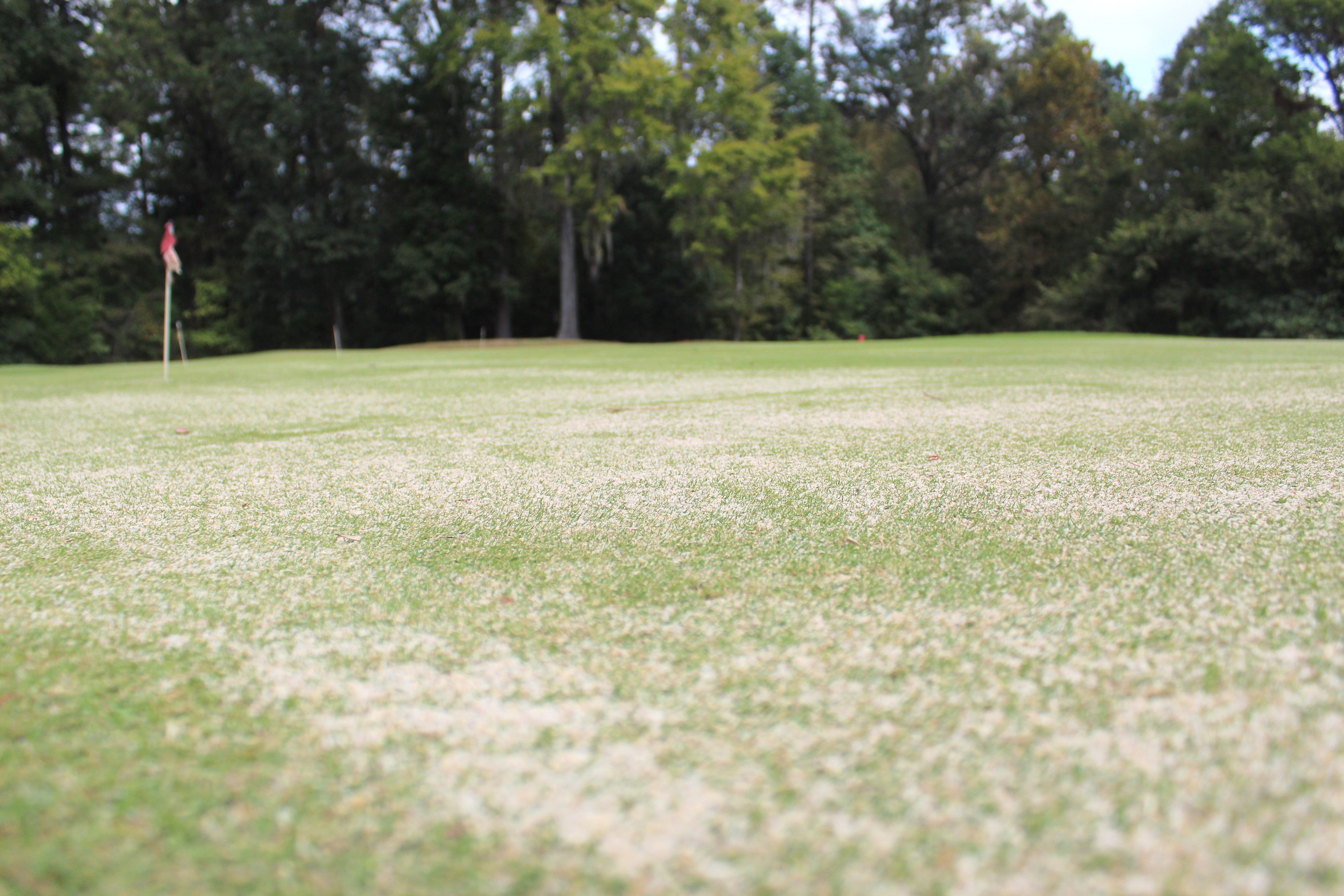Cooler temperatures change focus for course maintenance
Published 7:11 am Sunday, November 7, 2021

- This is what top dressing the greens looks like. Top dressing is one of the ways golf courses stimulate healthy growth of their greens and combat diseases. Golf Courses will spray fungicide, mulch leaves and prune trees during the fall and winter maintenance. (Hunter Cloud | The Natchez Democrat)
|
Getting your Trinity Audio player ready...
|
NATCHEZ — Just because the cool months are starting, work at Beau Pre Country Club and Duncan Park Golf does not slow down.
What does slow down is the amount of golfers out on the courses. Beau Pre Country Club Pro David Myer said business starts to slow down during the fall for a few reasons. The cooler temperatures and shorter daylight hours are the major factor in this lull.
“A lot of the golfers have other activities too, and they go to football and hunting,” Myer said. “Once you get into November and December it is the holiday season. A lot of golfers go out of town and spend the holidays somewhere else. We will have some busy days if the weather is good but it will get busy again in March.”
This slow down in business gives golf courses a chance to take a break and to put their energy into readying the course for the spring.
Preventing diseases
Duncan Park Golf Course superintendent Greg Brooking said crews have started their work to get the course ready for the winter. If you look around the course you may notice sand on the greens. Thatch is a layer of organic matter which accumulates at the bass of the grass. Too much thatch can cause water to not penetrate the soil, grass diseases to form and shallow root systems. Top dressing is used to smooth the greens out, prevent thatch and facilitate healthy growth, Brooking said.
“You can protect the plants with a late year top dressing,” Brooking said. “The grass grows inside the sand and it reduces thatch. It helps by airifying the greens and that is what reduces thatch.”
Additionally, Brooking battles diseases on the course by spraying a preventative fungicide. Grass in Mississippi is susceptible to several types of fungus. He said the most common fungus attacks come from take-all patch and brown patch fungi.
“The fungus eats away at the roots under the ground,” he said.
Stimulating growth
Root growth is one of the most important tasks of winter maintenance at a golf course. Maintaining a high potassium content at the root level of grass is one of the ways to keep grass fed with nutrients, Brooking said.
Beginning in August, his staff will use potassium chloride fertilizer with a range from 0-0-60 to 0-0-30. By December, Natchez should receive its first frost and that is when the plants quit taking up nutrients because they go dormant. Grass needs potassium to build up its storage cells, he said.
Natchez’s soil is already high in potassium concentration, and typically nitrogen is not sprayed this time of year because it is more for top growth. He said nitrogen fertilization is recommended for homeowners even, but it should have been done late September or early October. Water is another way Brooking protects the roots.
“If we know it is going to be 25 degrees or below, we will go to the pump station and drain all the pipes,” Brooking said. “Now if it is dry we will go ahead and spray all of that water onto the grass. When it is really wet, the water freezes before the grass does. 32 degrees will not kill the grass, but extended periods of time it could. I’ve even let the water freeze on the greens before to buffer the greens and keep the roots from getting below 32.”
Changing of play
Hibernating grass does change the flow of golf. Myer said because they do not cut the grass as short, and the ground typically remains soft, it impacts the way a golf course is played because it is longer.
Cooler temperatures can have an impact on a golfer and his swing. If a player dresses for the cooler temps then the extra clothing can be a hindrance, he said. Frost does close the course down, he said.
“We don’t let golfers go out if there is a frost,” Myer said. “In a few days after the frost, you could see where they walked. When there is frost on the ground we don’t let anyone go out there. People could cause damage to the grass and kill it.”
Leaves of fall
Falling rain drops cause havoc in the spring to golf course management, but falling leaves cause just as much chaos, Brooking said. Nearly every green fairway, tee box, cart path and bunker is in close proximity to trees. Woods are all around Duncan Park and Beau Pre.
This battle with the leaves has not begun yet, but it looms on the horizon. When leaves do begin to fall, Brooking said his staff will blow leaves off the greens and bunkers into an area where they can mulch them.
“We keep the mulch inside the mowers so it goes back into the ground. We want to keep the organic matter there,” Brooking said. “It is a constant fight with the leaves. It starts in a few weeks and by January we had mowed them all. We have to mow every square inch of this course during the winter. It never stops, the maintenance never stops.”
Acorns are already starting to fall on the greens which have to be blown off too. They could cause damage to mowers, he said.
Other projects
The winter is a perfect time for golf courses to take care of projects they were not able to get done during the rush of the spring and summer. It is also a great time to prune trees, Brooking said.
When the trees lose their leaves and their sap goes down into the roots it is the best time to prune because it does less damage, he said. Myer said he uses the time to address other tasks on the course.
“We correct any drainage issues we need to take care of,” he said. “We get some bunker repairs done too. We clean up around the pro shop and cart barn and get more organized.”






